 W
WThe 7 cm mountain gun was a Japanese ordnance first used in 1883. Because of the relative expense of steel at the time, the gun was produced with a bronze barrel. The 7 cm was used in the First Sino-Japanese War as the main artillery, and was used again in the Russo-Japanese War by second-line troops.
 W
WThe 7.5 cm Feldkanone 16 neuer Art was a field gun used by Germany in World War II. Originally built as the World War I-era 7.7 cm FK 16, surviving guns in German service were re-barrelled during the early 1930s in the new standard 7.5 cm calibre. It was not modernized for motor towing and retained its original wooden spoked tires and two crew seats on the face of the gun shield.
 W
WThe 7.5 cm Feldkanone 18 was a field gun used by Germany in World War II. It was designed to replace the 7.5 cm FK 16 nA, which was a World War I-era 7.7 cm FK 16 rebarreled in 75 mm during the early Thirties. The development of the FK 18 had a low priority and it was not until 1938 that the gun was issued to the Heer.
 W
WThe 7.5 cm GebG 36(German: 7.5 cm Gebirgsgeschütz 36) was a 7.5 cm (3.0 in) German mountain gun used during World War II. At least 1,193 were built between 1938 and 1945. It was the standard light gun of the German mountain divisions, both Army and Waffen-SS, during World War II.
 W
WThe 7.5 cm Gebirgskanone Model 1911 was a mountain gun manufactured for export in 1911 by the German firm Rheinmetall. Nine batteries were sold to Norway. During the 1940 Norwegian campaign, a number of these were captured by the Germans, who designated them 7.5 cm GebK 247(n). The crew were protected by an armoured shield.
 W
WThe 7.5 cm Infanteriegeschütz 37 was an infantry support gun, used by Germany during World War II. The guns were originally designated 7.5 cm PaK 37. The IG 37s were manufactured, beginning in late 1944, from carriages of 3.7 cm Pak 36s and a barrel designed originally for the IG 42 infantry support gun. As an anti-tank weapon it used a hollow charge shell with 0.5 kg of explosives to penetrate up to 85 mm (3.3 in) with a velocity of 395 m/s (1,300 ft/s). The first 84 guns were delivered in June 1944. By the end of the war 1,304 guns were operational.
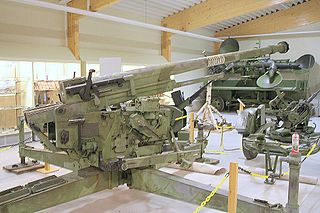 W
WThe 7.5 cm kanon PL vz. 37 was a Czech anti-aircraft gun used in World War II. Those weapons captured after the German occupation of Czechoslovakia in March 1939 were taken into Wehrmacht service as the 7.5 cm Flak M 37(t) or Flak Skoda. The Germans sold many of them to Italy where they were designated as the Cannone da 75/49 or 75/50. Surviving guns were taken back into German service after Italy's surrender in 1943. Twenty were sold to the Finns in November 1940. Twelve were in Luftwaffe service between April and September 1944.
 W
WThe 7.5 cm KwK 37 L/24 (7.5 cm Kampfwagenkanone 37 L/24) was a short-barreled, howitzer-like German 75 mm tank gun used during World War II, primarily as the main armament of the early Panzer IV tank. Slightly modified as StuK 37, it was also mounted in early StuG III assault guns.
 W
WThe 7.5 cm KwK 40 (7.5 cm Kampfwagenkanone 40) was a German 75 mm Second World War era vehicle-mounted gun, used as the primary armament of the German Panzer IV (F2 models onwards) medium tank and the Sturmgeschütz III (F models onwards) and Sturmgeschütz IV tank destroyers/assault guns.
 W
WThe 7.5 cm KwK 42 L/70 was a 7.5 cm calibre German tank gun used on German armoured fighting vehicles in the Second World War. The gun was the armament of the Panther medium tank and two variants of the Jagdpanzer IV self-propelled anti-tank gun. On the latter it was designated as the "7.5 cm Panzerabwehrkanone 42" anti-tank gun.
 W
WThe 7.5 cm leichtes Infanteriegeschütz 18 was an infantry support gun of the German Wehrmacht used during World War II.
 W
WThe 7.5 cm Leichtgeschütz 40 was a recoilless gun used by the German Army during World War II.
 W
W7.5 cm Pak 39 (L/48) (7.5 cm Panzerjägerkanone 39) was a 7.5 cm German Second World War era anti-tank gun. The gun was used to equip Jagdpanzer IV/48 and Jagdpanzer 38 tank destroyers; no towed version of the weapon was made. The Pak 39 was an electrically fired weapon fitted with a semi-automatic breech mechanism and a 48 caliber long barrel. The gun was able to destroy the most common allied tanks at up to 1,000 meters. It used the same 75 x 495R ammunition as the 7.5 cm KwK 40 of Panzer IV and 7.5 cm StuK 40 gun fitted on the Sturmgeschütz assault guns. The Pak 39 was manufactured from 1943 onwards by Rheinmetall-Borsig AG in Unterlüß and by Seitz-Werke GmbH in Bad Kreuznach. The main types of ammunition used were: Panzergranatpatrone 39 (APCBC), Sprenggranatpatrone 37 (HE) and different versions of the Granatpatrone 39 HL (HEAT).
 W
WThe 7.5 cm Pak 40 was a German 75 millimetre anti-tank gun developed in 1939–1941 by Rheinmetall and used during the Second World War. With 23,303 examples produced, the Pak 40 formed the backbone of German anti-tank guns for the later part of World War II, mostly in towed form, but also on a number of tank destroyers such as the Marder series.
 W
WThe 7.5 cm Pak 41 was one of the last German anti-tank guns brought into service and used in World War II and notable for being one of the largest anti-tank guns to rely on the Gerlich principle to deliver a higher muzzle velocity and therefore greater penetration in relation to its size.
 W
WThe 75 mm 50 caliber Pattern 1892 was a Russian naval gun developed in the years before the Russo-Japanese War that armed the majority of warships of the Imperial Russian Navy during the Russo-Japanese War and World War I. The majority of ships built or refit between 1890-1922 carried Pattern 1892 guns. During its career the role of the guns evolved from one of anti-torpedo boat defense to coastal artillery and anti-aircraft use.
 W
WThe 75 mm armata przeciwlotnicza wz.36 was a Polish designed and built anti-aircraft gun that was used during the Second World War.
 W
WThe US 75 mm gun was the standard American gun mounted to a mobile platform during World War II. They were primarily mounted on tanks but were also mounted on the B-25 Mitchell medium bomber aircraft. There were four variants used during the war: M2, M3, M5, and M6.
 W
WThe 75 mm gun M1916 was a US Army field artillery piece used during and after World War I. It was used as an anti-aircraft gun as well as a field piece. It originated as the 3-inch gun M1913, which was soon modified to the 3-inch gun M1916, which was later altered to the subject weapon.
 W
WThe 75 mm gun model of 1917 was an interim measure, based on the British QF 18-pounder, produced by the United States in World War I after it had decided to switch from 3-inch (76 mm) to 75 mm calibre for its field guns.
 W
WThe 75 mm Reșița Model 1943 was an anti-tank gun produced by Romania during World War II. It combined features from the Soviet ZiS-3 field\anti-tank gun, the German PaK 40 and the Romanian 75 mm Vickers/Reșița Model 1936 anti-aircraft gun. It saw service against both the Soviets during the Jassy-Kishniev Offensive and against the Germans during the Budapest Offensive and subsequent operations to clear Austria and Czechoslovakia.
 W
WBofors 75 mm and Bofors 80 mm were two closely related designs of anti-aircraft and general-purpose artillery. Less well known than the 40 mm quick-firing AA gun, the gun was nevertheless adopted by armed forces of numerous countries during World War II, including Argentina, China, Dutch East Indies, Finland, Greece, Hungary, Persia and Thailand. It was closely related to the 8.8 cm Flak 18/36/37/41, one of the best-known AA guns of World War II, which was partially based on it. Some pieces captured by the Japanese in China served as the blueprint for the Type 4 75 mm AA Gun, a reverse-engineered clone of the Bofors 75mm gun.
 W
WThe Bofors 75 mm Model 1934 was a mountain gun produced in Sweden by Bofors and sold abroad widely. The Model 1934 was used by Germany, Belgium, the Netherlands and China in World War II. Germany bought a small number of guns (12) for evaluation and training before the war and designated them as the 7.5 cm Gebirgshaubitze 34. Belgian guns, known by them as the Canon de 75 mle 1934, captured by Germany were designated as 7.5 cm Gebirgskanone 228(b). The later model 1936 was purchased by Bulgaria.
 W
WThe Bofors 75 mm mountain gun was a Swedish designed and built mountain gun of the interwar years that was used during the Second World War.
 W
WThe Canon de 75 contre avion modèle 1940 Schneider was a French 75 mm anti-aircraft gun designed and manufactured by Schneider et Cie at Le Creusot. These guns were used by the French Army during the Second World War.
 W
WThe Canon de 75 antiaérien mle 1913–1917 were a family of French 75 mm anti-aircraft guns designed and manufactured by Schneider et Cie at Le Creusot. The guns were used by the French Army during the First World War and Second World War.
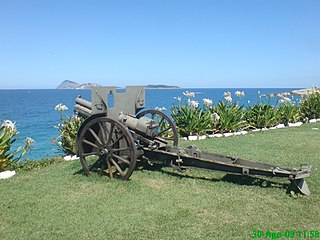 W
WThe Canon de 75 M (montagne) modèle 1919 Schneider was a French mountain gun designed as a replacement of the 65 mm mle 1906. The mle 1919 was manufactured by Schneider et Cie and used during World War II. For transport, the gun could be broken down into seven sections. This weapon was used by Brazil, Paraguay, Yugoslavia and Greece. When captured by the Germans in World War II, the French guns were designated 7.5 cm GebK 237(f); the Yugoslav guns were designated 7.5 cm GebK 283(j). The gun crew was protected by an armoured shield.
 W
WThe Canon de 75 Montagne modèle 1928 was a French mountain gun, used by France, Poland and Nazi Germany during World War II.
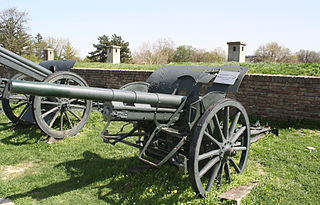 W
WThe Canon de 75 mle GPIII was a field gun used by Belgium during World War II. Cockerill mounted a sleeve in the barrels of ex-German 7.7 cm FK 16 guns received as reparations after World War I to convert them to the standard Belgian 75mm ammunition. After 1940, the Wehrmacht designated captured guns as the 7.5 cm FK 236(b). This gun was nearly the equivalent of the German 7.5 cm FK 16 nA and apparently saw wider service than the other captured Belgian guns.
 W
WThe Canon de 75 mm modèle 1924 was a French naval anti-aircraft gun designed after World War I. It served aboard battleships, cruisers and destroyers during World War II.
 W
WThe French 75 mm field gun was a quick-firing field artillery piece adopted in March 1898. Its official French designation was: Matériel de 75mm Mle 1897. It was commonly known as the French 75, simply the 75 and Soixante-Quinze. The French 75 was designed as an anti-personnel weapon system for delivering large volumes of time-fused shrapnel shells on enemy troops advancing in the open. After 1915 and the onset of trench warfare, other types of battlefield missions demanding impact-detonated high-explosive shells prevailed. By 1918 the 75s became the main agents of delivery for toxic gas shells. The 75s also became widely used as truck mounted anti-aircraft artillery. They were also the main armament of the Saint-Chamond tank in 1918.
 W
WThe Canon de 75 modèle 1905 Schneider was a field gun used by Bulgaria during World War I and World War II. Some 324 had been delivered by the end of 1907 and most were still in service in 1939.
 W
WThe Canon de 75 modele 1912 Schneider was a French World War I piece of 75 mm artillery, designed and manufactured by Schneider et Cie in Le Creusot. It entered service with the French horse-mounted artillery in 1912 and a number were sold to the army of Serbia. By the end of the war, all guns in French service were replaced with the more successful and standardised Canon de 75 modèle 1897. The remaining guns were then sold to Poland, where they were used in the Polish-Bolshevik War.
 W
WThe Canon de 75 modele 1914 Schneider was a French World War I piece of 75 mm artillery, designed and manufactured by Schneider et Cie in Le Creusot. Similar to the later Canon de 75mm Modele 1912 Schneider and also a derivative of Canon de 75 modèle 1897, it featured a longer barrel and an extended firing range.
 W
WThe Ehrhardt 7.5 cm Model 1901 was a field gun designed and built by the German company Rheinische Metallwaren- und Maschinenfabrik and sold to Norway in 1901. It remained the main field artillery gun of the Norwegian Army until the German invasion of Norway in 1940. The Germans impressed the surviving guns and used them in Norway for the duration of the Second World War. They equipped German units in Norway and were used as coastal artillery guns; a number were even modified for use as anti-tank guns. A dozen guns were transferred by the Norwegian government to Finland during the Winter War and were used by them during the Continuation War as well.
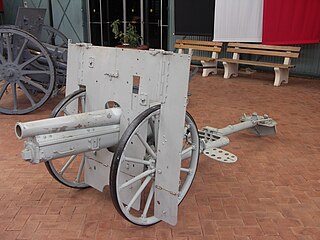 W
WThe Ehrhardt 7.5 cm Model 1904 mountain guns were originally issued to the Schutztruppe in German South-West Africa. The gun was also issued to the Portuguese colonial forces in Angola.
 W
WThe Krupp 7.5 cm Model 1903 was a field gun used by a number of European armies in both World War I and World War II. The Model 1903 was a "stock gun" from Krupp that could be supplied to customers on short notice with minor alterations to suit the customers needs.
 W
WThe Krupp gun is a family of artillery pieces that was used by several world armies from the nineteenth century onwards.
 W
WThe 75 mm M.27 was a Norwegian mountain gun used in World War II. Twenty-four of these guns were designed and built by Kongsberg Kanonfabrik to supplement the old 75mm Ehrhardt M.11 guns. There is no record of any use by Nazi Germany after the Norwegian Campaign
 W
WSkysweeper was an anti-aircraft gun deployed in the early 1950s by both the U.S. Army and U.S. Air Force. It was the first such gun to combine a gun laying radar, analog computer (director) and an autoloader on a single carriage.
 W
WThe 75mm Pack Howitzer M1 was an artillery piece used by the United States. It was designed in the 1920s to meet a need for a howitzer that could be moved across difficult terrain. The gun and carriage were designed so that it could be broken down into several pieces to be carried by pack animals. The gun saw combat in World War II with the United States Army, with the United States Marine Corps, and was also supplied to foreign forces.
 W
WThe Mortier de 75 modèle 1915 Schneider was a French trench mortar designed and built by Schneider that saw action with the French and Belgian Army during the First World War.
 W
WThe QF 2.95-inch mountain gun was the designation given by the British to a Vickers 75 mm calibre gun. It was originally produced for the Egyptian Army. It was taken into British service in the late 19th century to provide the 'movable armament' at some coaling stations. Also known as 'The Millimetre Gun', it was used by the West African Frontier Force in several theatres in Africa during World War I. It was also used by United States and Philippines.
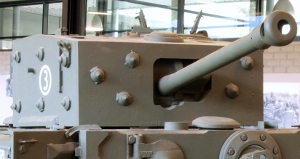 W
WThe Ordnance QF 75 mm, abbreviated to OQF 75 mm, was a British tank-gun of the Second World War. It was obtained by boring out the Ordnance QF 6 pounder 57-mm anti-tank gun to 75-mm, to give better performance against infantry targets in a similar fashion to the 75mm M3 gun fitted to the American Sherman tank. The QF came from "quick-firing", referring to the use of ammunition with the shell and propellant in a single cartridge. The gun was also sometimes known as ROQF from Royal Ordnance Quick-Firing.
 W
WThe Reffye 75mm cannon was a French artillery piece of the 19th century, developed by the French artillery General Jean-Baptiste Verchère de Reffye, superintendent of the works at Meudon. The weapon was adopted by the French Army from 1873. It was a 75 mm rifled breech-loading cannon, equipped with a breech screw, initially made of bronze.
 W
WThe Saint-Chamond-Mondragón 75mm gun was specified in the 1890s by Mexican General Manuel Mondragón, designed mostly by Colonel Émile Rimailho, and produced by the French arms manufacturer Saint-Chamond. It was widely used by different forces during the Mexican Revolution. It was also used in modified form to arm some of the French Saint-Chamond tanks deployed during the First World War.
 W
WThe 7-veld was the designation of Krupp 7.5 cm Model 1903 field guns purchased by the Netherlands in 1905 for the Dutch Army. The Dutch purchased 204 guns and 408 caissons from Krupp and produced another 120 guns under license. These saw service both in The Netherlands and the Dutch East Indies.
 W
WThe Skoda 7.5 cm Gebirgskanone M. 15 was a mountain gun used by Austria-Hungary in World War I. In German service, it was known as the 7.5 cm GebK 15. The Italians designated them as the Obice da 75/13 and the Wehrmacht would designate captured guns as 7.5 cm GebK 259(i) after the surrender of Italy in 1943.
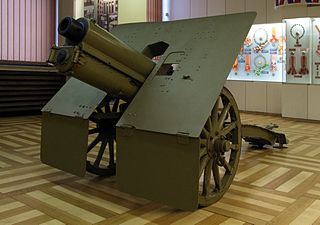 W
WThe Skoda 75 mm Model 1928 was a mountain gun manufactured by Skoda Works and exported to Yugoslavia. It was a modernized version of the Skoda 75 mm Model 15. The gun typically had a 75 mm barrel; however, it could be fitted with a 90 mm barrel. The Wehrmacht redesignated these guns as 7.5 cm GebK 28 or 7.5 cm GebK 285(j). The gun crew was protected by an armoured shield.
 W
WThe Type 4 75 mm AA gun was an anti-aircraft gun developed by the Imperial Japanese Army. They started producing the gun in 1943. The Type 4 number was designated for the year the gun was accepted, 2604 in the Japanese imperial year calendar, or 1944 in the Gregorian calendar. Due to the lack of raw materials available and the great damage by air raids to its industrial infrastructure, only 70 units were made. These units were retained for defense of the Japanese home islands during World War II.
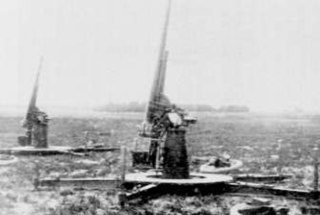 W
WThe Type 11 75 mm anti-aircraft gun was an anti-aircraft gun used by the Imperial Japanese Army after World War I. The Type 11 designation was given to this gun as it was accepted in the 11th year of Emperor Taishō's reign (1922). It was the first anti-aircraft gun in Japanese service, but only a small number were produced, and it was superseded by the Type 14 10 cm gun and the Type 88 75 mm gun in active service before the start of World War II.
 W
WThe Type 31 75 mm quick-firing gun was the main field gun deployed by the Imperial Japanese Army in the Russo-Japanese War of 1904–1905.
 W
WThe Type 38 75 mm field gun was a 1905 German design which was purchased by the Empire of Japan as the standard field gun of the Imperial Japanese Army at the end of the Russo-Japanese War. The Type 38 designation was given to this gun as it was accepted in the 38th year of Emperor Meiji's reign (1905).
 W
WThe Type 41 75 mm cavalry gun was a Japanese field gun first accepted into service in 1908. The Type 41 designation was given to this gun as it was accepted in the 41st year of Emperor Meiji's reign (1908). It was a slightly lightened version of the Type 38 75 mm field gun that was based on a 1905 Krupp design. It was the primary weapon of artillery units attached to cavalry formations. Although effectively obsolete by the start of World War II, it was used in limited numbers despite nominally being replaced by the Type 95 75 mm field gun.
 W
WThe Type 41 75 mm mountain gun is a Japanese license-built copy of the Krupp M1908 mountain gun. The Type 41 number was designated for the year the gun was accepted, the 41st year of Emperor Meiji's reign, 1908 in the Gregorian calendar. Originally it was the standard pack artillery weapon. After it was superseded by the Type 94 75 mm mountain gun, it was then used as an infantry "regimental" gun, deployed four to each infantry regiment, and referred to as "rentai ho". Two gun shields were produced for the weapon, an early type, which folded into thirds, and a late type, which folded in half.
 W
WThe Type 88 75 mm AA gun was an anti-aircraft gun used by the Imperial Japanese Army during the Second Sino-Japanese War and World War II. The Type 88 number was designated for the year the gun was accepted, 2588 in the Japanese imperial year calendar, or 1928 in the Gregorian calendar. It replaced the earlier Type 11 75 mm AA gun in front line combat service, and at the time was equal in performances to any of its contemporaries in western armies and was considered capable of handling any targets the Japanese army was likely to encounter on the Asian mainland. Although it was soon overtaken by improvements in aircraft technology and was largely obsolete by 1941, it continued to be used on many fronts until the end of the war.
 W
WThe Type 90 75 mm field gun was a field gun used by the Imperial Japanese Army during the Second Sino-Japanese War, Soviet-Japanese Border Wars and World War II. The Type 90 designation was given to this gun as it was accepted in the year 2590 of the Japanese calendar (1930). It was intended to replace the Type 38 75 mm field gun in front line combat units, but due to operational and budgetary constraints, the Type 38 continued to be used.
 W
WThe Type 94 75 mm mountain gun was a mountain gun used as a general-purpose infantry support gun by the Imperial Japanese Army during the Second Sino-Japanese War and World War II. It superseded the Type 41 75 mm mountain gun to become the standard pack artillery piece of Japanese infantry divisions. It was superior to the Type 41 in range and in weight. The Type 94 number was designated for the year the gun was accepted, 2594 in the Japanese imperial year calendar, or 1934 in the Gregorian calendar.
 W
WThe Type 95 75 mm field gun was a field gun used by the Imperial Japanese Army during World War II. It was intended to replace the Type 38 75 mm field gun and the Type 41 75 mm cavalry gun in front line combat units but, due to operational and budgetary constraints, only a small number were produced, and the Type 38 and Type 41 continued to be used. The Type 95 number was designated for the year the gun was accepted, 2595 in the Japanese imperial year calendar, or 1935 in the Gregorian calendar.
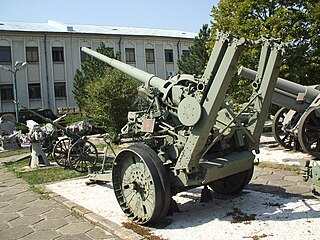 W
WThe Vickers Model 1931 was a British anti-aircraft gun used during the Second World War. The design was rejected by the British and Vickers exported the gun worldwide during the 1930s. Romania bought a license for 100 in 1936, although hundred more were built during the war. The second batch of 100 pieces was started in July 1941, the production rate being of 5 pieces per month as of October 1942. Denmark also bought a license. Belgium, the Netherlands, Lithuania, Turkey, Switzerland and China bought numbers of guns directly from Vickers. Finland bought a dozen to help reduce balance of payment problems with the British in 1936. The Finnish guns were chambered in their standard 76.2 mm (3 in) caliber. Those weapons captured after the German conquest of Europe were taken into Wehrmacht service as the 7.5 cm Flak M 35(h) or 7.5 cm Flak M 35(d). Similarly the Soviet Union used those guns it captured from Lithuania. Supposedly it saw limited British service with Home Defense "barrage units" 1940—43.